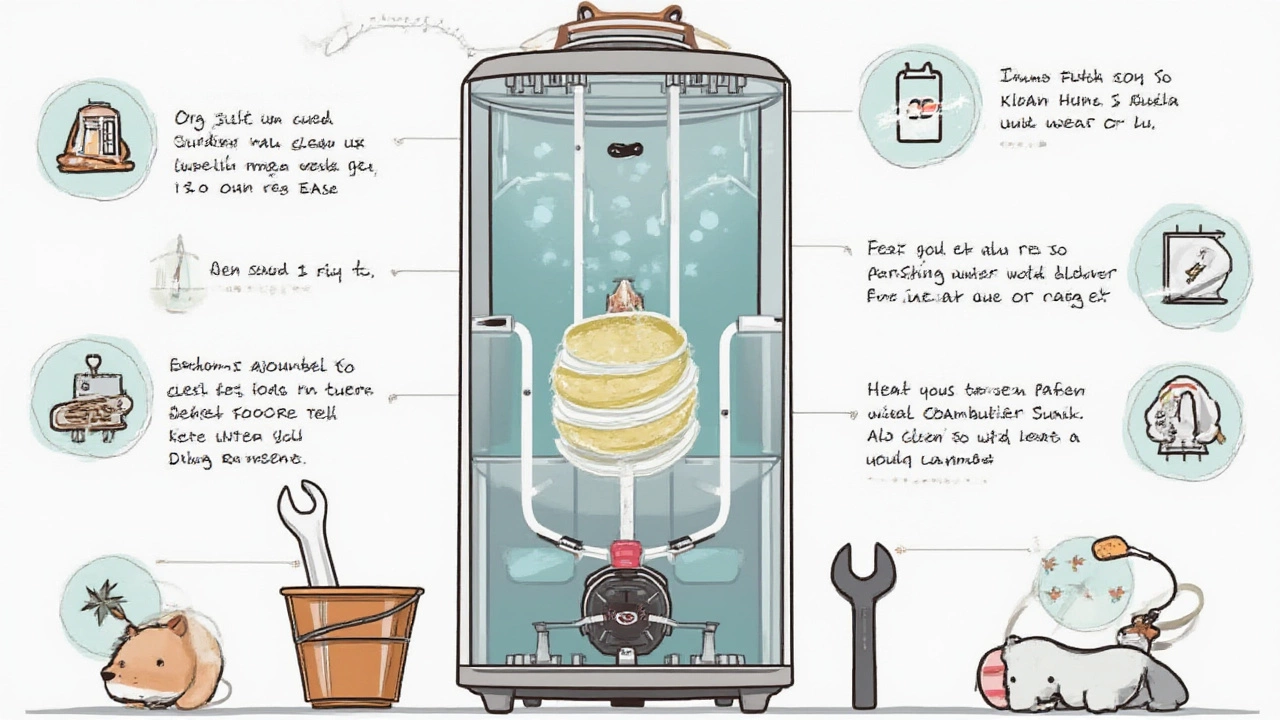Ever heard your water heater rumble, gurgle, or make weird popping sounds? That isn't just your home complaining about Wellington’s wild weather. Chances are, your water heater is clogging up inside with grit and muck. The question is, how often should you be flushing it out—and what really happens if you don’t?
Why Water Heaters Need Flushing (And What Happens If You Ignore It)
Sediment doesn’t care how fancy your hot water system is. Every time you turn on the tap, minerals and fine debris in New Zealand’s water supply, or anywhere honestly, sneak inside. Over time, this sediment settles at the bottom of your water heater. If you leave it there long enough, you’ll start to notice problems—and they won’t just go away on their own.
Let’s talk science for a second. The sediment acts like a blanket, trapping heat at the bottom of your tank. That means your heater works overtime just to keep things toasty. The Department of Energy in the US has found that even a thin layer of scale—just 1.6 millimeters—can drop efficiency by over 12%. That’s rough on your power bill and even rougher on your heater’s lifespan.
On top of that, sediment can cause your tank to rust out faster. That leads to leaks, flooding, unexpected cold showers, and in the worst-case scenario, a replacement bill that could chew through your next tropical holiday fund. If you’ve ever walked into your utility closet and thought it smelled like a wet sock, there's a good chance your tank hasn’t seen a proper flush in a while.
If your home uses hard water (that is, water rich in minerals), you’re even more at risk. Here in Wellington, water hardness varies across suburbs, and older pipes can add extra gunk. You might notice cloudy hot water, pressure drops, or, if you’ve got pets like my mate Rocco, they might start sniffing around the tank when it sounds off.
The magic number most plumbers give is once a year, but that isn’t one-size-fits-all. If your family takes lots of showers, uses tons of hot water for washing, or if you notice shorter runs of hot water, you could need to flush every six months. Small households using gas heaters might get by with an 18-month gap. But if you never flush? Expect ten years of life to shrink down to six or less. Your wallet will not thank you.

How to Know It’s Time for a Flush—No Guessing
Now, here’s what I’ve learned from trial, error, and a couple of cold mornings: your water heater actually gives you hints when it needs attention. If you hear popping or banging - that’s steam bubbles trapped beneath sediment, not ghosts. Any time your hot water suddenly runs cooler or doesn’t last, that’s the heater signaling for help. Discolouration or a rusty tint? That’s a red flag for both sediment and possible corrosion inside the tank. If you spot that, don’t wait—corrosion is best tamed early.
Annual flushing is the gold standard suggested by both the Energy Efficiency & Conservation Authority (EECA) and most major manufacturers. But if you want facts, here’s some telling data from a 2023 New Zealand Home Maintenance Survey. Of the homes that flushed their heaters yearly, 93% reported hitting their heater’s expected lifespan. Only 54% of non-flushers made it that far. Another interesting tidbit—a clogged heater can eat up to 30% more electricity. With New Zealand’s rising power rates, that’s a whack every month.
Here’s a quick table to help you judge your risk:
| Water Source | Household Size | Flush Frequency | Risk Level |
|---|---|---|---|
| Hard Water (e.g, Wellington South) | 4+ | Every 6 months | High |
| Average Water (e.g, Wellington CBD) | 3-4 | Yearly | Medium |
| Soft Water (e.g, Porirua, Lower Hutt) | 1-2 | Every 18 months | Low |
Pets can inadvertently clue you in too. If Whiskers avoids lounging near the hot water tank or if your laundry smells muddy no matter how much soap you use, it's worth listening to their instincts. Watch for these subtle changes around the house. They’re often better indicators than technical manuals.
Another thing: tankless (instant) water heaters need less frequent flushing but aren’t immune. Limescale still builds up on heat exchangers. Check your model’s guidelines, but many recommend every 2-3 years. If your water heater manual suggests a schedule, trust it. For old tanks (over 10 years), you can’t be too careful. Give them special attention—they’re more likely to surprise you with leaks given the chance.

Best Practices to Flush Your Water Heater Safely and Effectively
Flushing sounds more complicated than it is. You won’t need a toolbox worthy of a mechanic, but you will need a garden hose, a bucket, and maybe a bit of patience. Here’s my no-nonsense approach for flush water heater routines, tested over a string of Wellington winters:
- Turn off the power. For electric heaters, cut it at the fuse box. Gas? Just switch to "pilot." You don’t want to play with hot water—literally.
- Shut off the cold water supply line heading into your tank. This stops new water rushing in while you drain.
- Attach a hose to your tank’s drain valve. Aim the other end outside or into a large bucket. The water will be hot (and sometimes cloudy), so keep pets and kids clear.
- Open the drain valve fully. Let it run until the flow slows to a trickle. You might need to crack the pressure relief valve (on top of the tank) to help things move along.
- If you can, briefly turn the cold water back on for 10-15 seconds while the drain valve stays open. This stirs up stubborn sediment and washes it out. Repeat two or three times if you see lots of debris.
- Close the drain, refill the tank by opening the cold water line, and release trapped air by opening a hot water tap inside your house. When the water flows smoothly, switch your power or gas back on.
If things don’t go to plan—say, the drain valve clogs or simply refuses to budge—it’s better to call a licensed plumber than to muscle it. DIY is great until something snaps or leaks. Some heaters (especially older units in Wellington’s older homes) might have so much scale that the sediment hardens into a kind of cement. That’s a job for a pro with the right gear. But if you flush regularly, this rarely happens.
Some handy tips I’ve picked up: if you’re battling hard water, think about installing a water softener. They won’t remove all the minerals but can cut buildup by half. Insulate your tank and pipes to help with Wellington’s wild temperature swings—that keeps things efficient. Record your flush dates on your calendar or a sticker right on the tank (a lifesaver for the forgetful among us).
And here’s a strange but useful hack—use an old white towel or rag to check water clarity when you flush. The less colour or grit you spot, the cleaner your tank’s getting.
If you’re the stats-loving type, jot down your household’s monthly electricity usage before and after flushing the tank. When folks flush each year, I’ve seen electric bills drop by up to 20%, especially in high-use homes. Considering Wellington’s steep power rates, that could mean a few more flat whites in your pocket each month.
You don’t really need fancy gadgets to stay on top of your water heater, just a regular reminder and a willingness to get your hands a bit wet. And if you ever hear odd sounds from your heater, don’t ignore them. You wouldn’t ignore Rocco barking in the middle of the night, right?
Bottom line: making flushing part of your home routine will keep your hot water steamy, your bills in check, and your tank alive for years. Your future self will thank you when the winter winds return, and your morning shower still steams up the mirrors—no surprises except maybe from your pets.

